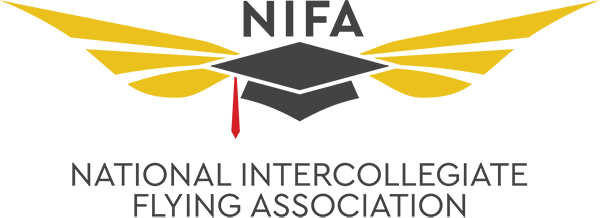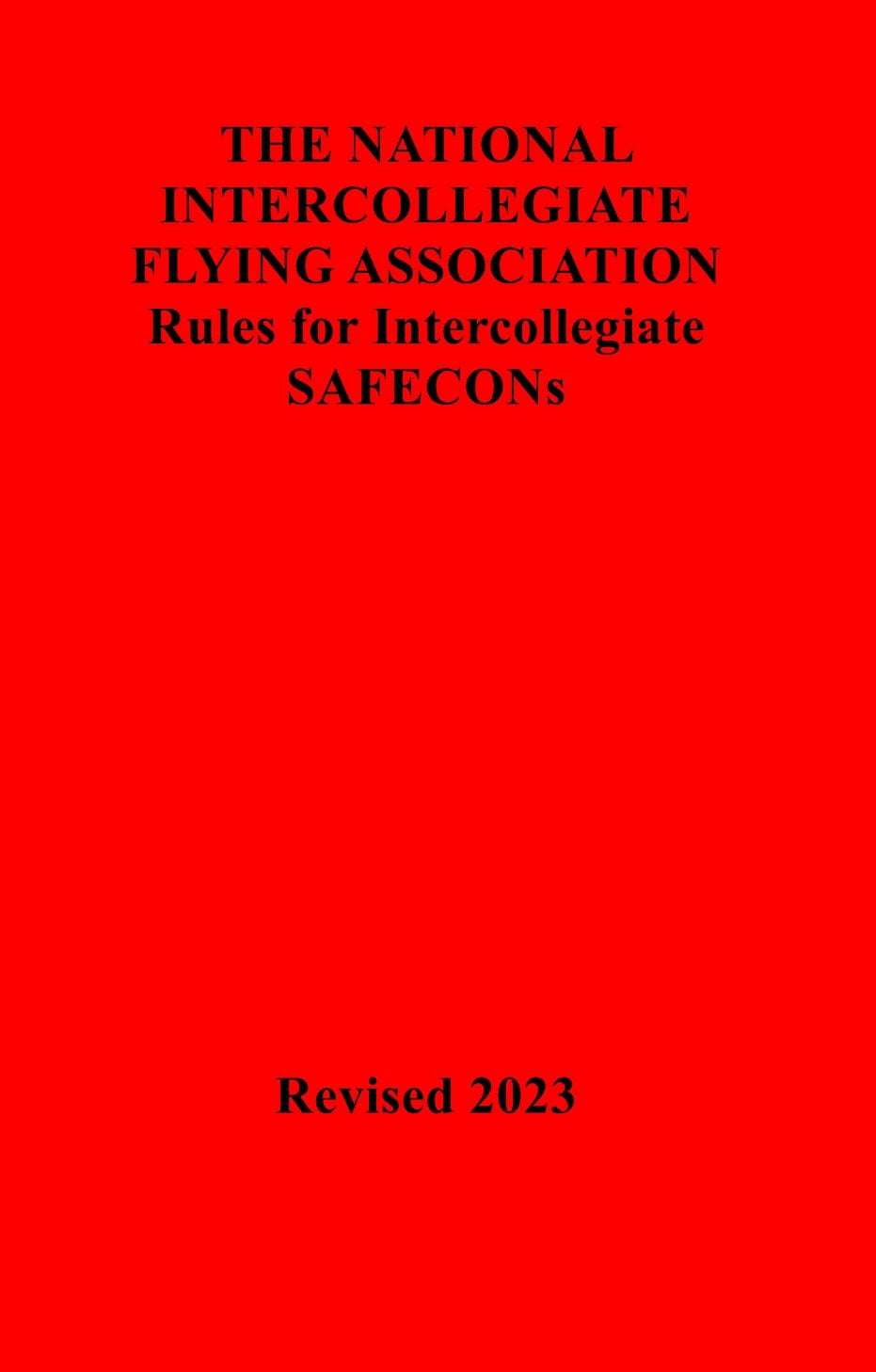Rules for Intercollegiate SAFECONs Revised 2024 (download) is a descriptive list of NIFA events and the rules that apply to each event. Also included are tables which show penalty values assigned for rule infraction. This is a PDF document which is viewed online and if printed, will print full sheet pages in sequential order.
All of the events described below are official NIFA events. However, not every event is contested at every SAFECON. The NIFA Executive Committee selects which of the above events will be held for each National SAFECON. Regional host committees or host schools determine which of the above events are contested in their region. Occasionally, proposed new events are contested on an experimental basis to determine their acceptability.
Events
The Navigation Event consists of a cross-country flight over a three-to-five leg course between 70 and 120 nautical miles. Each contestant submits a flight plan before takeoff, which includes estimated time en route for each leg, total elapsed time and fuel consumption. The contestant with the lowest penalty points wins.
Short-field Landing Event
The objective of the Short-field Event is to test the pilot’s skill at maneuvering and manipulating the aircraft. After taking off and flying a normal traffic pattern, the objective is to land as close to, if not on, the target line. Once the pilot reduces the power, he or she cannot increase it again. The distance in feet from where the aircraft’s wheels initially touch the runway to the target line is the pilot’s score. The lowest cumulative score from the two landings, plus technique penalty points, if any, wins.
Power Off Landing Event
Similar to the Short-field Event, except that the power must be reduced and remain at idle on the downwind leg abeam the target line. The approach is made essentially by gliding for the remainder of the traffic pattern to touchdown, preferably on the target line.
Message Drop Event
The objective of the Message Drop Event is to hit a target on the ground with a message container dropped from an aircraft at 200 feet above the ground. A team effort by both the pilot and the drop master is necessary to maneuver the airplane so the two containers will hit their respective targets. The contestant whose container lands with the lowest total distance from the two targets is the winner.
Simulated Comprehensive Aircraft Navigation Event (SCAN)
The SCAN event is a written exam with problems that reference a simulated cross-country flight over a given route. Included in the flight planning are questions on weight and balance, aircraft performance, FARs, aeronautical charts, weather interpretations, and fuel consumption.
Ground Trainer Event
This event is designed to test the competency and skill of the contestant’s ability to fly under instrument flight rules (IFR) in a flight-training device. Flying a predetermined pattern, the competitor must show proficiency in maintaining altitude, heading and airspeed.
Aircraft Recognition Event
Slides of aircraft are shown on a screen for three seconds. Competitors then have fifteen seconds to identify the aircraft’s manufacturer, model number, and common name, if any.
Computer Accuracy
Contestants work against the clock to solve mathematical flight planning computations using a manually operated flight computer. The exam includes problems on time, speed, distance, wind corrections, fuel requirements and conversion factors.
Preflight Inspection Event
An aircraft is “bugged” with at least 30 unairworthy discrepancies. Contestants are given fifteen minutes to preflight the aircraft and find as many of the discrepancies as possible.
IFR Simulator Event
Competitors are required to demonstrate instrument flight rules (IFR) proficiency and precision by flying a given route in a simulator. All aspects of cross-country IFR flight are included such as receiving clearances, holding patterns, instrument approach procedures and deviation to an alternate.
Certified Flight Instructor Event
Certified Flight Instructors take part in a teaching competition. The event starts with the CFI preparing a predetermined subject. If weather and time permits, the CFI then teaches the lesson in flight.
This award is presented to the team that accumulates the most points during the National Competition.
Loening Trophy
First awarded in 1929, the Loening Trophy is presented to the team who, during the last year, has displayed outstanding competition performance, air safety, and active participation in aviation in their local community. All member schools in good standing are eligible.
American Airlines Safety Award
A panel of judges will interview each team’s safety officer to review their team’s procedures and methods of promoting aviation safety. The team that has demonstrated the safest practices during SAFECON and the past year is presented with this award.
Collegiate Aviation Progress Award
This award recognizes the team that has made the greatest improvements in the last year. A judging committee evaluates each team, taking into account the team’s performance, safety, membership, aircraft operations and extracurricular activities.
Coach of the Year Award
This award is presented to the coach that has demonstrated the best qualities in coaching, support, and leadership. Team members nominate the coach they feel best meets these criteria.
Men’s Achievement Award
Male competitors are interviewed by a board that examines their academic accomplishments, community service, and aviation involvement.
Women’s Achievement Award
Female competitors are interviewed by a board that examines their academic accomplishments, community service, and aviation involvement.
Competition Safety Award
This award is presented to the team displaying the highest degree of safety during the week of competition. Teams are judged on their ability to maintain a safe environment while handling aircraft as well as their professionalism and behavior.
National & Regional Top Pilot Awards
The contestant that is chosen as the National Top Pilot at SAFECON, along with the Regional Top Pilots from each region, are recognized and presented with these awards.
CRM/LOFT (Crew Resource Management / Line-Oriented Flight Training)
This is a simulated IFR flight with a crew of two pilots flying a multi-engine aircraft. They are scored on their ability to communicate, cross-check each other, divide duties, and problem-solve to safely complete the flight while reacting to any unforeseen circumstances that may arise.


